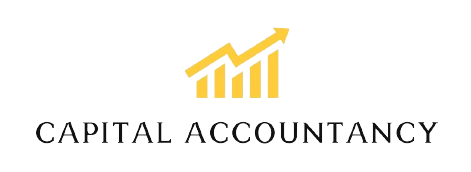Most financial services organisations today manage complex multi-entity investments. It’s an approach that minimises risk but also creates a number of challenges for CFOs and other leaders.
Portfolio accountants need to continuously monitor metrics such as cash-on-cash performance, fair market value (FMV) and net asset value (NAV) across numerous operating companies.
There may be multiple territories and currencies to consider—and all this data held across siloed systems and spreadsheets needs to be regularly compiled and analysed in timely and actionable reports.
Despite the overwhelming amount of work, too many financial services firms are still relying on manual reporting, which is prone to error and tedious for accounting teams.
Others may tick the required reporting requirements for compliance but don’t have the visibility they need to inform higher level strategic decisions.
When it’s done right, successful portfolio accounting goes further than simply reconciling financial data. It’s about empowering leaders with the data and insights they need to take action.
And it’s only achievable with the right software.
Here’s what we cover in this article:
What is portfolio accounting?
A portfolio describes the collection of investments a person has.
These can be stocks, bonds, cash (and equivalents), or commodities, and their fund counterparts (or a mixture of all four).
A portfolio can be strategic, whereby financial assets are held for a substantial period of time, or tactical. In a tactical portfolio, an asset is bought and sold quickly to hopefully secure a short-term profit.
Portfolio accounting is the act of:
- Monitoring the health of the portfolio
- Reporting on the portfolio
- Identifying the risks and opportunities to guide decision-making
- Advising on the metrics influencing a portfolio’s performance.
It’s therefore important that portfolio accountants have visibility across numerous dimensions, asset classes, currencies, accounting bases, and different reporting schedules and requirements.
What is a portfolio accounting system?
Financial institutions such as asset managers use portfolio accounting systems to monitor and report on investment performance.
The software can also track transactions, positions, and risk metrics, and provide information for compliance, client reporting, and tax reporting.
With the right systems at hand, accountants can focus on analysis and decision making, rather than simply compiling the data in a timely manner.
The right system will often make it possible to automate tasks and generate reports with the click of a button.
Portfolio accounting systems help firms manage investments more successfully, leading to better performance, more loyal client relationships, and overall business growth.
In today’s competitive market, one that has been plagued by uncertainty in recent years, it’s an essential part of every accountant’s toolkit.
How do you choose the right portfolio management accounting software?
The right accounting software helps accountants maintain portfolio visibility and control—but it can be hard to find a platform that addresses all your needs.
There are several key features worth looking out for.
The first is flexibility. Portfolio accountants will be handling an array of asset classes, so it’s important that the software can cope with a mix of stocks, bonds, cash and commodities, and provide real-time visibility around their performance.
Your portfolio accounting software should be able to integrate with any other wealth management systems and other applications already in place (ideally via an open API), and streamline finance across entities, regions, and jurisdictions.
Features such as the ability to create user-friendly, customisable dashboards are also important, helping cut down on staff time while elevating the insights that leadership teams can tap into.
Finally, CFOs should make sure any portfolio accounting system they choose is scalable.
As with any significant investment, this solution needs to be able to adapt and grow alongside the financial service organisation as it evolves for the future.
Frequently asked questions on portfolio accounting
What’s the difference between portfolio accounting and fund accounting?
Allocation is a key point of difference between portfolio and fund accounting.
In fund accounting, transactions must be tracked at the partner level to account for differences in ownership, investment decisions, and management fees.
Investors require their profits and commitments to be calculated on an individual basis, with specialised reporting which goes beyond ownership percentages.
What is a portfolio accounting system?
A portfolio accounting system is used to monitor and report on investment performance.
The software tracks transactions, positions, and risk metrics, and provides information for compliance, client reporting, and tax reporting.
What is the best portfolio accounting system?
The best portfolio accounting system will depend on your budget and priorities, but you should look for software that is user-friendly and flexible, can integrate with your existing applications and systems via an open API, and can scale in the future.
How a purpose-driven bank thrives with Sage Intacct
Learn how Kingdom Bank gained deeper financial insights and improved reporting capabilities with Sage Intacct.

The post What is portfolio accounting in financial services? appeared first on Sage Advice United Kingdom.
